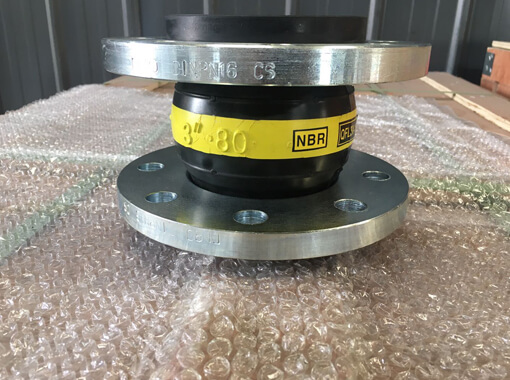Rubber expansion joints are devices that are installed in pipelines to absorb movements caused by thermal expansion and contraction, as well as to reduce the transmission of noise and vibration in the system. They are typically installed in areas where there is a change in direction or size of the pipeline, or where there is a connection between two different materials, such as steel and plastic.

One of the main uses of rubber expansion joints is to compensate for thermal expansion and contraction. When a pipeline is subjected to temperature changes, it will expand and contract, which can cause stress on the pipeline and its components. Rubber expansion joints are designed to absorb this movement, which helps to prevent damage to the pipeline and prolong its lifespan.
In addition to compensating for thermal movement, rubber expansion joints also help to reduce the transmission of noise and vibration in the pipeline system. When fluids flow through a pipeline, they can create noise and vibration, which can be transmitted throughout the system. Rubber expansion joints are designed to absorb these vibrations, which helps to reduce the amount of noise and vibration that is transmitted through the system.
Another important use of rubber expansion joints is to alleviate stress on the pipeline system. When a pipeline is subjected to various stresses, such as pressure changes or movement, it can cause damage to the pipeline and its components. Rubber expansion joints are designed to absorb these stresses, which helps to reduce the amount of damage that is caused to the pipeline and its components.
Rubber expansion joints are compensators used in pipeline systems to compensate for the thermal expansion and contraction, pressure changes, vibration, and other factors that may affect the pipeline system. Rubber expansion joints have the following uses:
Compensate for pipeline thermal expansion and contraction: The pipeline will undergo thermal expansion and contraction at different temperatures. Without compensation measures, the pipeline will be subjected to a large amount of stress, which will affect the normal operation of the pipeline. Rubber expansion joints can compensate for the deformation caused by pipeline thermal expansion and contraction through their own flexibility, ensuring the normal operation of the pipeline.
Absorb pipeline vibration: The pipeline will be affected by various vibrations during operation. Without compensation measures, these vibrations will cause serious damage to the pipeline and the pipeline system. Rubber expansion joints can absorb pipeline vibration through their elasticity, protecting the normal operation of the pipeline system.
Alleviate pipeline stress: The pipeline system will be subjected to various stresses during operation. Without compensation measures, these stresses will cause serious damage to the pipeline and the pipeline system. Rubber expansion joints can alleviate pipeline stress through their flexibility, protecting the normal operation of the pipeline system.
Overall, rubber expansion joints play an important role in ensuring the safe and efficient operation of pipeline systems. By compensating for thermal movement, reducing noise and vibration, and alleviating stress on the system, they help to extend the lifespan of the pipeline and its components, and ensure that the system operates smoothly and reliably.
Post time: Apr-03-2023


